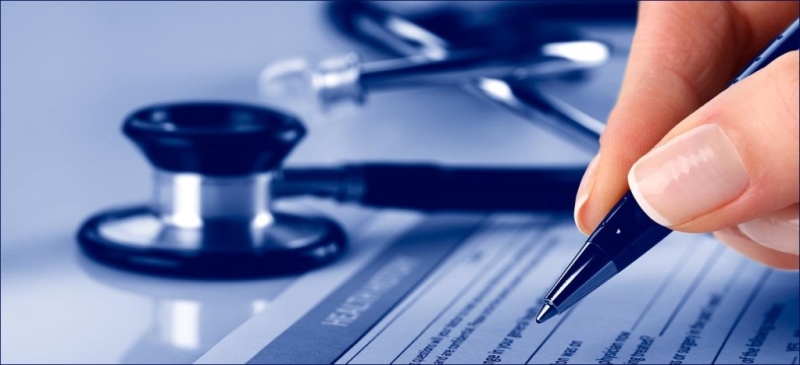Essential Medical Billing Examples: A Clear Guide to Navigating Healthcare Claims
In today’s complex healthcare habitat,understanding medical billing is crucial for healthcare providers,billing specialists,and patients alike. properly navigating healthcare claims not only ensures timely reimbursement but also minimizes billing errors and denials. In this comprehensive guide, we’ll explore essential medical billing examples, practical tips, and real-world case studies to demystify the billing process and empower you to handle claims confidently.
Understanding Medical Billing: The Basics
Medical billing involves translating healthcare services into universal billing codes, preparing claims, and submitting them to insurance companies or payers for reimbursement. Accurate billing requires knowledge of coding systems like CPT (Current Procedural Terminology), ICD-10 (International Classification of Diseases), and HCPCS (Healthcare Common Procedure Coding System).
Key elements of medical billing include:
- Patient Information
- Insurance Details
- service Codes
- Cost Data
- Supporting Documentation
- Claim Submission and Follow-up
Essential Medical Billing Examples
Let’s examine some typical healthcare service scenarios and how they translate into billing claims. These examples highlight the importance of precise coding and documentation.
Exmaple 1: Routine Office Visit
A patient visits their primary care physician for a routine check-up.the provider performs a physical exam, reviews medications, and discusses lifestyle recommendations.
- Service Code (CPT): 99213 – Office or other outpatient visit for an established patient, typically 15 minutes.
- ICD-10 Diagnosis Code: Z01.419 – Encounter for routine child health examination without abnormal findings.
- Billing Notes: Ensure documentation of the visit details, time spent, and services provided.
Example 2: Emergency Room Treatment for Chest Pain
A patient presents with chest pain and receives a comprehensive assessment in the ER, including diagnostic tests and treatment.
| Procedure | Code | Description |
|---|---|---|
| ER Evaluation | 99285 | Emergency department visit for the evaluation and management of a patient with high severity problem) |
| ECG | 93000 | Electrocardiogram, routine EKG with at least 12 lead |
| Blood Tests | 80053 | General health panel |
Diagnosis Code: I20.9 – Angina pectoris, unspecified
Example 3: Surgical Procedure (Appendectomy)
A patient undergoes an appendectomy, a common surgical procedure.
- Procedure Code (CPT): 44950 – appendectomy
- ICD-10 Diagnosis Code: K35.80 – Acute appendicitis without perforation
- billing Tip: Include operative notes and pathology reports to support the claim.
Benefits of Accurate medical Billing
- Faster claim processing and reimbursement
- Lower rejection and denial rates
- Enhanced patient satisfaction
- Compliance with insurance and legal regulations
- Better financial health for healthcare providers
Practical Tips for Effective Medical Billing
- Keep Documentation clear and Detailed: Accurate records ensure claims are supported and reduce errors.
- Use Up-to-Date Coding Resources: Stay current with ICD-10, CPT, and HCPCS updates.
- Verify Patient Insurance Details: Confirm coverage and benefits before services.
- Implement Regular Training: Ensure staff understands coding standards and billing procedures.
- Automate and Use Billing Software: Leverage technology for accuracy, efficiency, and compliance.
- Follow Up on Claims: track submitted claims and address delays or denials promptly.
Case Study: How Accurate Billing Boosted Revenue
In a mid-sized outpatient clinic, billing errors were causing delayed payments and increased claim rejections.By adopting comprehensive training, updating billing software, and establishing rigorous internal audits, the clinic improved its claim acceptance rate from 75% to 95%. This overhaul resulted in a 20% increase in revenue within six months, demonstrating the power of correct billing practices.
First-Hand Experience: Navigating Complex Claims
As a billing specialist, I’ve seen that understanding nuances, such as modifiers and billing for procedures under different payer policies, can make or break a claim. For instance, correctly applying modifier 25, which indicates a significant, separately identifiable evaluation and management service, can ensure the claim is paid appropriately. Staying vigilant and continuously learning is essential for triumphant medical billing.
Additional Resources
For those looking to deepen their understanding, consider joining certified billing courses, subscribing to industry updates, and participating in professional forums. The more informed you are, the better your chances of navigating healthcare claims efficiently.
Summary
Mastering medical billing examples and best practices is essential for ensuring smooth healthcare claims processing. Whether you’re a healthcare provider,billing professional,or patient,understanding the essentials of accurate coding and documentation can significantly impact financial health. Implementing practical tips, leveraging technology, and learning from real-world case studies can help you become more proficient and confident in managing healthcare claims effectively.
Conclusion
Effective medical billing is the backbone of a healthy healthcare revenue cycle. By familiarizing yourself with common billing examples, employing accurate coding, and applying best practices, you can reduce errors, accelerate reimbursement, and maintain compliance. Remember,continuous education and attention to detail are key. Embrace these insights, and you’ll be well on your way to navigating healthcare claims with clarity and confidence.



